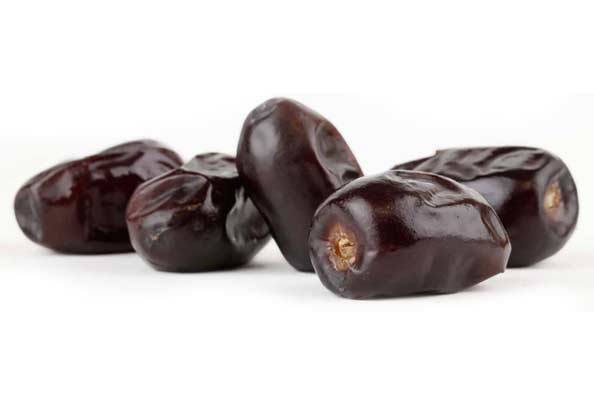Mazafati dates are one of the oldest cultivated fruits in Iran. Different types of dates are Kharak Date, Piarom Dates, Mazafati Dates that vary in terms of sugar content.
The colors of dates are either bright yellow or red before being ripe and while becoming ripe, their color is of the yellowish brown. Dates can be used in both fresh and dried kind. The fresh dates are soft and dried ones are stiff and have less moisture.
The amount of carbohydrates, calcium and iron in dried dates are more than fresh dates, although fresh dates have the higher amount of vitamin C.
Some health professionals say eating one date per day is good and necessary for health.
Flavonoids can be useful for preventing and treating skin problems such as acne and its scars, dates are also a source of antioxidants that can prevent premature aging and wrinkles on the skin.
Dates also help improve wounds and skin damages.
Mazafati dates are one major species of fresh date and have a huge annual yield. It is estimated that 120,000 tons of the Mazafati dates are harvested annually. Primarily, this variety of date is consumed in domestic markets, but due to increased production in recent years, steps have been taken towards exporting also. Typically, Mazafti dates are harvested in 3 phases. Quality may vary between a high quality date with a soft, thin texture and low quality date with a hard, dry texture. It is a low waste process – samples of waste Mazafati dates were actually found to taste just as good, if not better, and be of just as good, if not better, quality. Annually, Iran produces close to one million tons of date fruit. There are 400 different types, 50 of which are well known in international markets and are exported throughout the world. Mazafati date palms can stay in production for over 60 years.
Exportation and consumer markets: Some of the major importers of Mazafati dates include North European countries (England, Sweden, Norway, Denmark, and Germany), the Persian Gulf littoral states, the North American countries (especially Canada), East Asian countries and Australia. Iranians living abroad are one of the main consumer sources.
Shelf life and storage: 2 years at -5°C or 12 months at 0-5°C (this can be prolonged by wrapping the dates in cling film and/or plastic). Mazafati dates should be kept refrigerated. The main producers of the Mazafati date keep them in cold storage; however, drying out Mazafati dates to reduce moisture can help to eliminate the need for cold storage.
| Name Of Product | Packing | TYPE | SIZE | GROSS WEIGHT | QUANTITY BOX IN ONE PACK | Keep At °C | Origin Country |
| MAZAFATI DATES | CNT | CLASS A | SMALL BOX | 6 KG | 12 | 0 TO -5 °C | IRAN |

